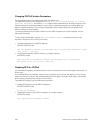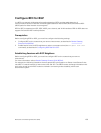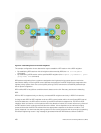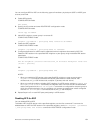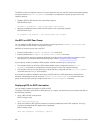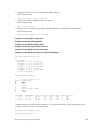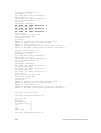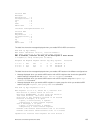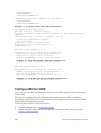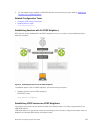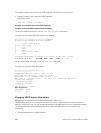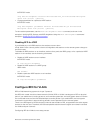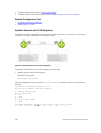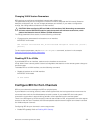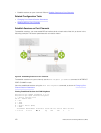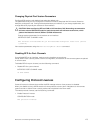
MULTIPROTO_EXT(1)
ROUTE_REFRESH(2)
CISCO_ROUTE_REFRESH(128)
Capabilities advertised to neighbor for IPv4 Unicast :
MULTIPROTO_EXT(1)
ROUTE_REFRESH(2)
CISCO_ROUTE_REFRESH(128)
Neighbor is using BGP global mode BFD configuration
For address family: IPv4 Unicast
BGP table version 0, neighbor version 0
Prefixes accepted 0 (consume 0 bytes), withdrawn 0 by peer, martian prefixes
ignored 0
Prefixes advertised 0, denied 0, withdrawn 0 from peer
Connections established 1; dropped 0
Last reset never
Local host: 2.2.2.3, Local port: 63805
Foreign host: 2.2.2.2, Foreign port: 179
E1200i_ExaScale#
R2# show ip bgp neighbors 2.2.2.3
BGP neighbor is 2.2.2.3, remote AS 1, external link
Member of peer-group pg1 for session parameters
BGP version 4, remote router ID 12.0.0.4
BGP state ESTABLISHED, in this state for 00:05:33
...
Neighbor is using BGP neighbor mode BFD configuration
Peer active in peer-group outbound optimization
...
R2# show ip bgp neighbors 2.2.2.4
BGP neighbor is 2.2.2.4, remote AS 1, external link
Member of peer-group pg1 for session parameters
BGP version 4, remote router ID 12.0.0.4
BGP state ESTABLISHED, in this state for 00:05:33
...
Neighbor is using BGP peer-group mode BFD configuration
Peer active in peer-group outbound optimization
...
Configure BFD for VRRP
When using BFD with VRRP, the VRRP protocol registers with the BFD manager on the route processor
module (RPM).
BFD sessions are established with all neighboring interfaces participating in VRRP. If a neighboring
interface fails, the BFD agent on the line card notifies the BFD manager, which in turn notifies the VRRP
protocol that a link state change occurred.
Configuring BFD for VRRP is a three-step process:
1. Enable BFD globally. Refer to Enabling BFD Globally.
2. Establish VRRP BFD sessions with all VRRP-participating neighbors. Refer to Establishing VRRP
Sessions on VRRP Neighbors.
166
Bidirectional Forwarding Detection (BFD)



